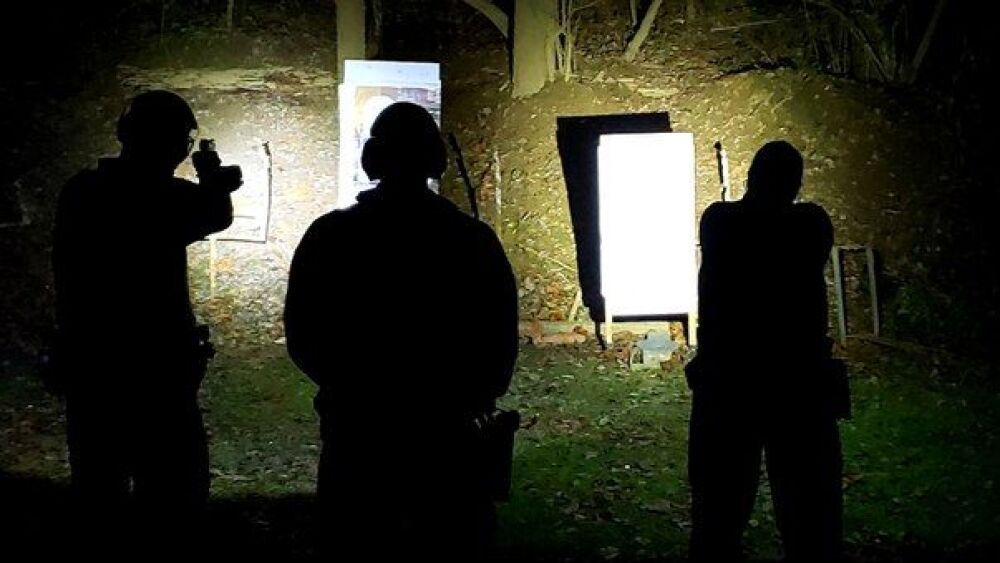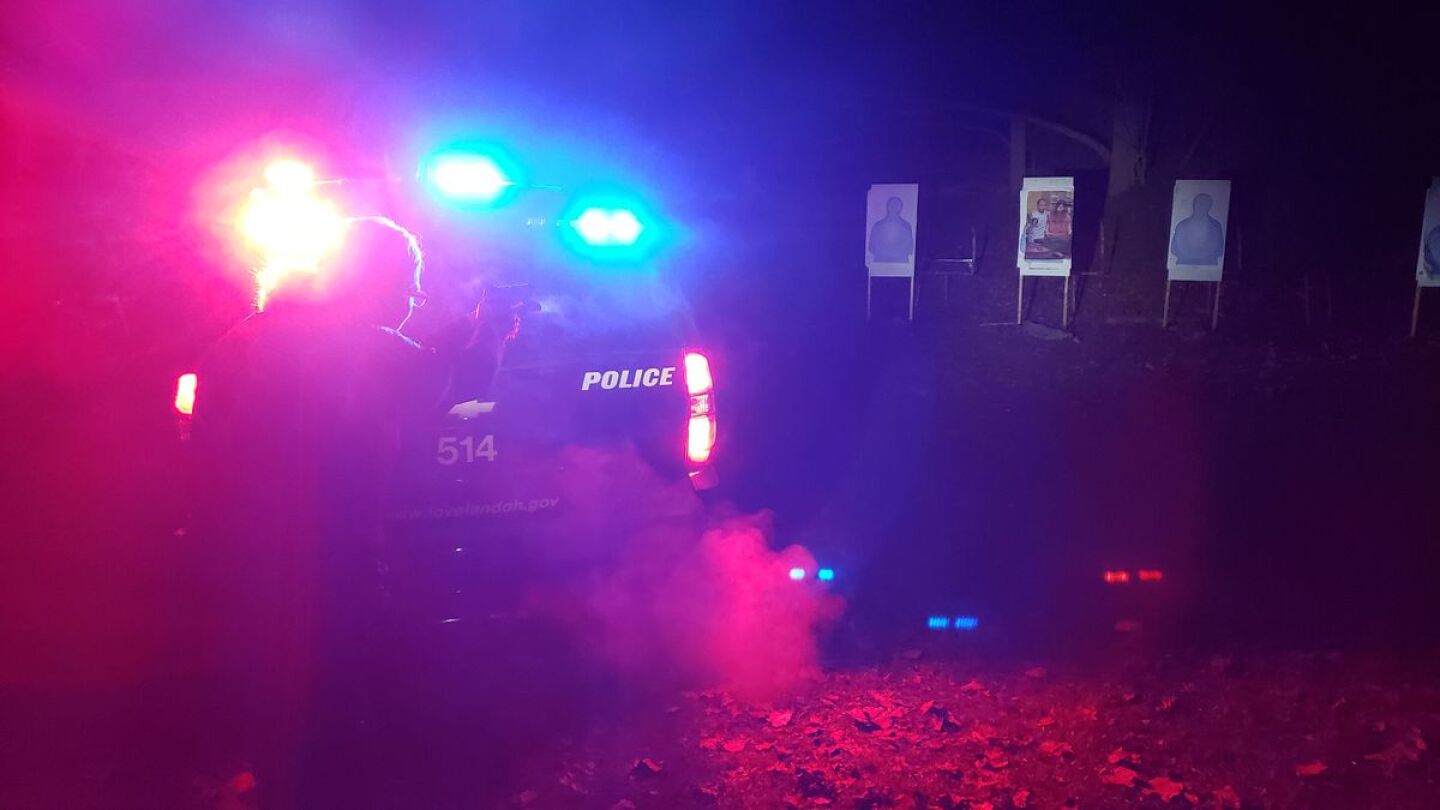If you would like Police1 to profile your police training day, email photos and a description of your training and lessons learned to editor@police1.com.
By Lieutenant Scott Humphrey
Low light conditions are a possibility at any time of day. Officers on day shift are called to respond to buildings with little to no light on a regular basis. Night shift officers work the majority of their shifts in a low light situation.
The Loveland Police Division in Loveland, Ohio, recently conducted low light training to remind officers on how to use light conditions to their advantage with the tools they have available.
In classroom training
The training began with a brief discussion of the possible lighting conditions that officers can encounter. Most officers recognize the different light levels, but often forget how they affect us and our subjects. We reviewed six different light types: bright light; medium light; low light; no light; backlighting; and offset lighting.
We discussed how using a flashlight properly can give officers a major advantage and provide the extra time needed to control the situation. We then reviewed the five flashlight techniques used with a firearm: Harries; Rogers; Ayoob; Modified FBI; and Neck index. This was all done dry fire in a sterile environment.
Range training
We started at the range with annual qualifications and then three use of force scenarios, which gave us the ability to view all the officers’ safety techniques and basic firearm comfort during daylight hours.
As the sun went down, we began the low-light portion, which consisted of the following three steps:
- First, we shot with no assistance of a light source. This showed that it’s possible to hit targets accurately with just backlight light from the moon, but would be very difficult to identify a threat. This also gave officers the chance to see how muzzle flash diminishes their ability to see at night after the first shot. Then we shot the same targets using the flashlight techniques we had reviewed.
- Second, we exposed each officer’s eyes to bright but indirect light for about five seconds, one at a time, and then had them shoot at a standard body target without help from a flashlight. We repeated this process allowing the officers to use a flashlight technique so we could demonstrate how they can defeat night blindness with light.
- Third, we placed a cruiser on the range and turned on the overheads. We set up a hostage-style target and had the officer respond to a hostage scenario, one at a time. After all the officers went through the scenario once, we went downrange and viewed what we had done from the subject’s point of view.
When all the range time was complete, we sat down and had a relaxed debrief. This allowed the instructors to get feedback, as well as give the officers time to think about what was reviewed and taught during the day.
Low light training should be taught yearly. Low light conditions are a possibility at any time of day. Knowing how to use lighting conditions and flashlights is as important as shooting accurately. The flashlight is an awesome tool that is often overlooked as a control device. I believe many situations can be controlled and won if we use our tools properly.
additional low light training resources
- When it goes down in the dark, are you ready?
- Why two hands are better than one: The advantages of a weapon light
- Training day: How to incorporate thermal imaging into police low-light training
- Low-light SWAT operations training: 5 tips for flashlight use
About the author
Scott Humphrey is a lieutenant with the Loveland Police Division in Loveland, Ohio.




